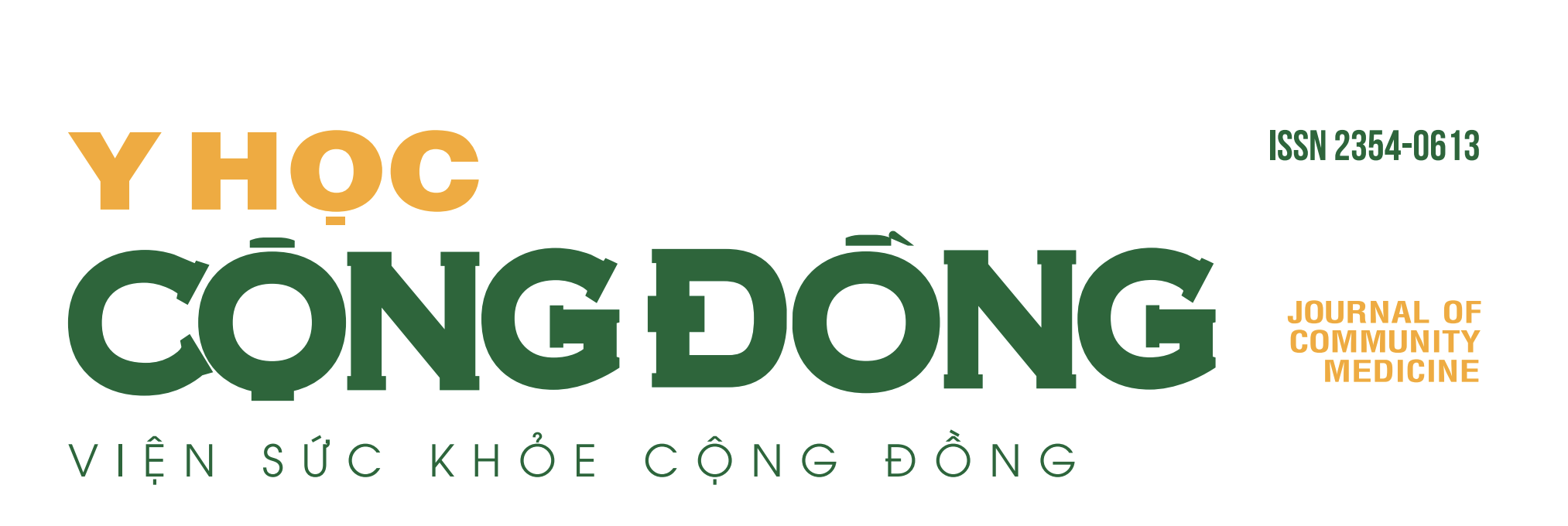48. TỶ LỆ TRẦM CẢM, LO ÂU VÀ STRESS Ở BỆNH NHÂN NGƯNG THỞ LÚC NGỦ TẮC NGHẼN TẠI BỆNH VIỆN ĐẠI HỌC Y DƯỢC TP.HCM
Nội dung chính của bài viết
Tóm tắt
Mục tiêu: Khảo sát tỷ lệ trầm cảm, lo âu và stress theo thang điểm DASS-21 ở bệnh nhân NTLNTN tại Bệnh viện Đại học Y Dược TP.HCM.
Đối tượng và phương pháp nghiên cứu: Nghiên cứu cắt ngang mô tả, xác định tỷ lệ trầm cảm, lo âu và stress được đánh giá bằng thang điểm DASS-21 trong dân số NTLNTN tại Bệnh viện Đại học Y Dược TP.HCM.
Kết quả: Tỷ lệ nam giới là 78,2%. Tuổi trung bình là 51,51 ± 16,41 năm, Chỉ số khối cơ thể (BMI) trung bình là 26,85 ± 5,30 kg/m². Chỉ số ngưng giảm thở AHI trung vị là 38,71 (18,70–54,40). Phân loại độ nặng hội chứng ngưng thở tắc nghẽn khi ngủ theo chỉ số ngưng giảm thở AHI: 21,8% nhẹ, 19,8% trung bình, 58,4% nặng. Tỷ lệ trầm cảm: 32,7%, lo âu: 64,4%, stress: 30,7%. Không ghi nhận mối tương quan có ý nghĩa thống kê giữa điểm DASS-21 và tuổi, giới hay mức độ AHI. Nhóm đã nghỉ hưu có điểm trầm cảm và lo âu cao hơn có ý nghĩa so với nhóm lao động trí óc. Người chưa tốt nghiệp cấp II có điểm lo âu cao hơn nhóm tốt nghiệp.
Kết luận: Tỷ lệ trầm cảm, lo âu và stress trong nhóm bệnh nhân NTLNTN là đáng kể, đặc biệt là lo âu. Các yếu tố kinh tế - xã hội như nghề nghiệp và trình độ học vấn có liên quan đến điểm DASS-21. Việc sàng lọc và can thiệp tâm lý ở bệnh nhân NTLNTN là cần thiết.
Chi tiết bài viết
Từ khóa
Hội chứng ngưng thở tắc nghẽn khi ngủ, OSA, DASS-21, trầm cảm, lo âu, stress
Tài liệu tham khảo
[2] Benjafield AV, Ayas NT, Eastwood PR, Heinzer R, Ip MSM, Morrell MJ, et al. Estimation of the global prevalence and burden of obstructive sleep apnoea: a literature-based analysis. Lancet Respir Med. 2019;7(8):687-98.
[3] Duong Quy S., Dang Thi Mai K, Tran Van N, Nguyen Xuan Bich H, Hua-Huy T, Chalumeau F, et al. Étude de la prévalence du syndrome d’apnées obstructives du sommeil au Vietnam. Revue des Maladies Respiratoires. 2018;35(1):14-24.
[4] Ohayon M. M. The effects of breathing-related sleep disorders on mood disturbances in the general population. The Journal of clinical psychiatry. 2003;64(10):1195-200; quiz, 274-6.
[5] Sharafkhaneh Amir, Giray N, Richardson P, Young T, Hirshkowitz M. Association of Psychiatric Disorders and Sleep Apnea in a Large Cohort. Sleep. 2005;28(11):1405-11.
[6] Sateia MJ. International classification of sleep disorders-third edition: highlights and modifications. Chest. 2014;146(5):1387-94.
[7] Iber C, American Academy of Sleep Medicine. The AASM manual for the scoring of sleep and associated events : rules, terminology, and technical specifications. Westchester, IL: American Academy of Sleep Medicine; 2007. 59 p. p.
[8] Tran TD, Tran T, Fisher J. Validation of the depression anxiety stress scales (DASS) 21 as a screening instrument for depression and anxiety in a rural community-based cohort of northern Vietnamese women. BMC Psychiatry. 2013;13:24.
[9] Demyttenaere K., Bruffaerts R, Posada-Villa J, Gasquet I, Kovess V, Lepine JP. Prevalence, severity, and unmet need for treatment of mental disorders in the World Health Organization World Mental Health Surveys. JAMA. 2004;291(21):2581-90.
[10] Kessler R. C., Berglund P, Demler O, Jin R, Merikangas KR, Walters EE. Lifetime prevalence and age-of-onset distributions of DSM-IV disorders in the National Comorbidity Survey Replication. Archives of general psychiatry. 2005;62(6):593-602.
[11] Akhtar-Danesh Noori, Landeen J. Relation between depression and sociodemographic factors. Int J Ment Health Syst. 2007;1(1):4-.

